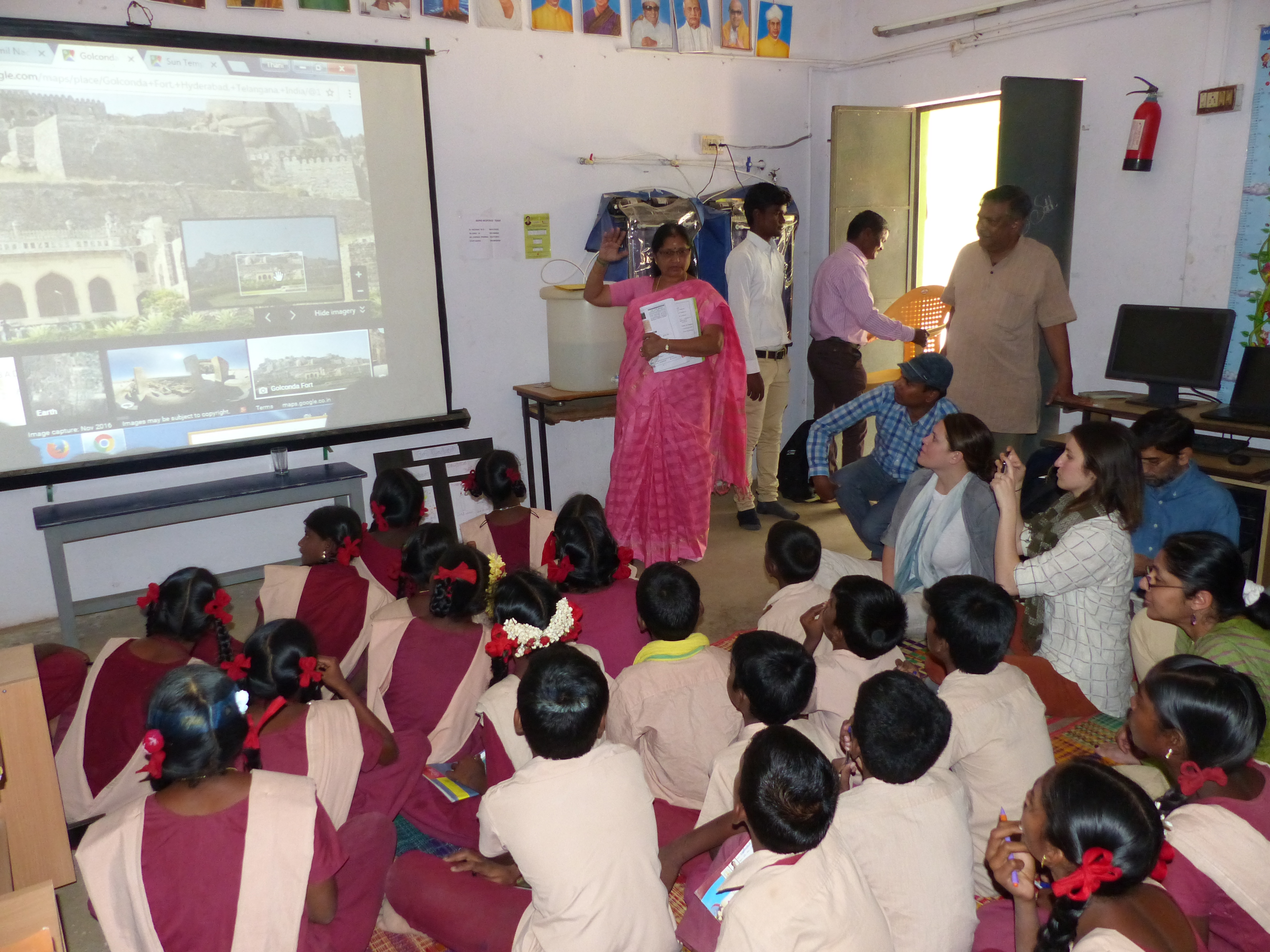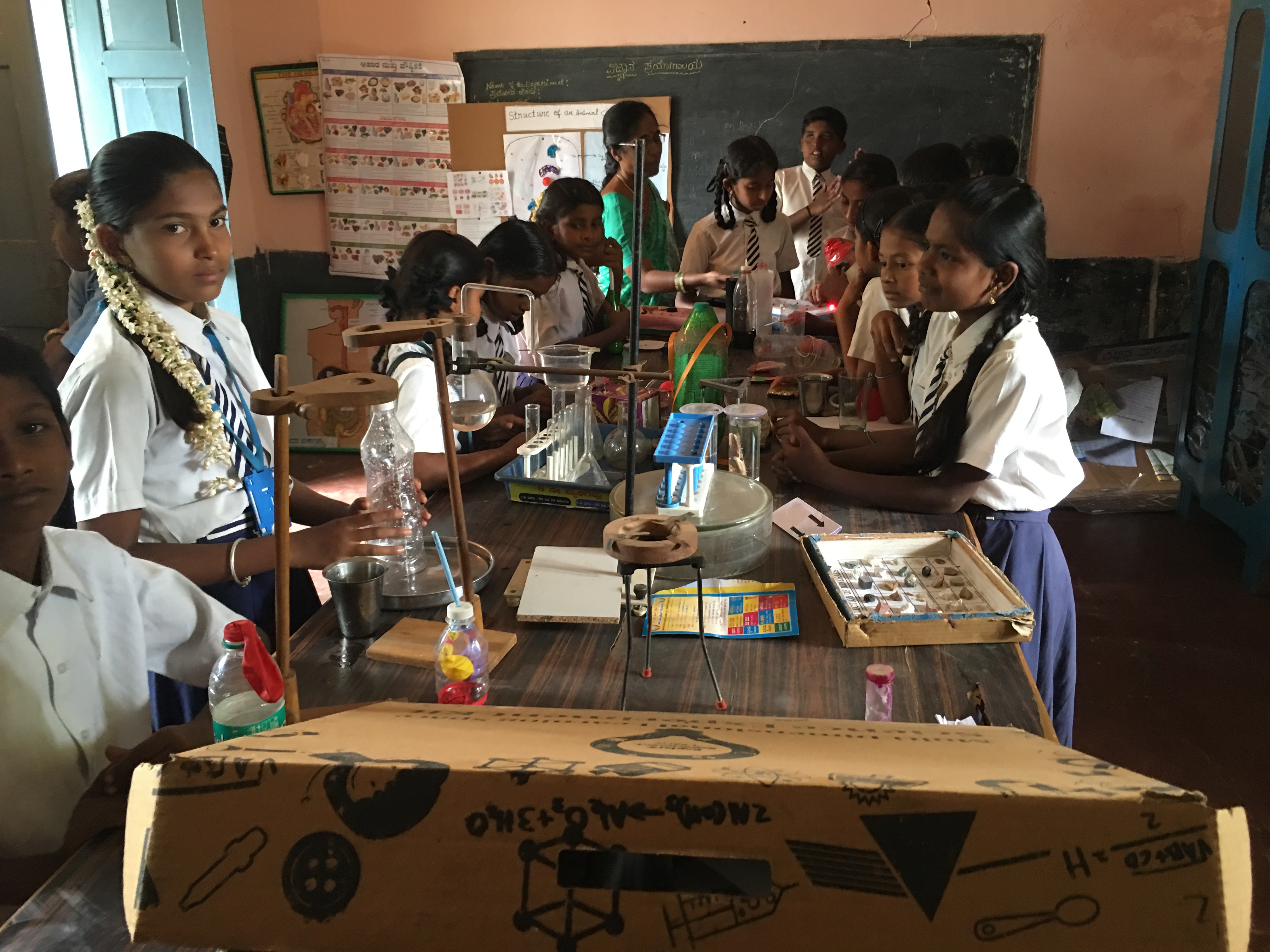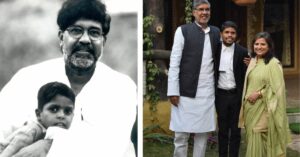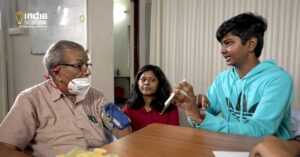Smart Classrooms, Interactive Content and Library Programs, How One Venture Is Changing Learning
The content provides children of government schools and rural areas a plethora of options to explore, experiment and discover.

What image did you conjure up in your mind the first time you read about kingdoms, forts, monuments, museums and rivers as children? For years, our History and Geography books have given us a distant view of these places. Now imagine being given a chance to virtually study about the dimensions of oceans, mountains, forests and glaciers inside a classroom. A non-profit organization called India Literacy project, in collaboration with Google Earth, is providing a one-of-a kind virtual reality learning experience to students in rural and Government schools by giving them a 3D view of such locations and sites.
Formally registered in India in 2000, the India Literacy Project supports education predominantly in rural and government run schools.

Their sole intent is to bridge the yawning gap in our education system; a perennial ailment that has significantly contributed in expanding, rather than reducing, the country’s unequal society. With branches spread across 17 different states and operations in over 2000 villages covering 3300 schools, ILP has impacted more than 300,000 people with its unique and comprehensive Multi –Dimensional Learning Space (MDLS) initiative.
While learning through Google Earth and Google maps is only one aspect of MDLS, a slew of other initiatives are embedded in the model to see to it that students are optimally benefitted through a motley of learning opportunities that allow both students and teachers to learn simultaneously. With smart classrooms, low cost science kits, interactive content for different subjects, unique library programs, interschool competitions for cross- school learning and access to digital infrastructure under its gamut, the MDLS model provides a plethora of options that allow children to explore, experiment and discover learning in multiple ways.
You might also enjoy reading: How One Man’s 4-Month Long Battle to Make Right to Education a Reality Everywhere Became Successful.
Aligning thoroughly with the UN’s sustainable development goal of quality education, the MDLS model is equally equipped in addressing the gender inequality that is so rampant in the primary segment of the education sector. “More than 70 % of the students in India go to primary government schools where the quality of education is mostly dismal. Girls form a major part of this portion and are often at the receiving end of this unjust distribution since parents prefer to send their boys to private schools. We can’t envision an egalitarian society until girls are granted their basic right to education which is why the ILP model is striving to be the catalyst for 100% quality literacy in India. Only when the girl child grows in education can she help in growing her community and nation” says, Manmohan Jain, chairperson and founder of ILP’s Hyderabad chapter.
The system is rightly focused on acquainting the community with a new thought-wave and empowering them with the right information about the school’s accountability in terms of mid-day meals, teachers’ attendance and school infrastructure.
Years of counseling have ensured a considerable participation from the community.

Archana Sali, a volunteer at ILP recalls, “There have been instances when the community, out of its desperation for better education, has sponsored fees for good school teachers. They have come a long way in realising that only good education can guarantee a decent standard of living.”
Inside classrooms too, the initiative has been effective enough in producing colourful results. Initiatives like low cost science kits have enabled students to probe their scientific bent of mind and devise their own scientific models. Available at a mere 1500 Rs., the science kit introduces the kids to as many as 150 experiments on electromagnetism, electricity and work force relations. “The results from these experimental workshops have been beyond our imagination. We have witnessed students making motor boats out of thermocol, plastic tubs and other low cost, reusable items.
You might also enjoy reading: ‘Leaving No One Behind.’ This Van Is Bringing Education to Some of India’s Most Underprivileged Kids.
These results are a testament to the fact that children from rural areas are as inquisitive as others and if we can nurture them with the right intellectual inputs, we can build a stronger, better India.” says Chandu, a volunteer at ILP.
Touching upon on all the aspects of education in innovative ways such as audio- video and visual content aligned with curriculum for primary kids, honing extra-curricular skills through inter –school competitions and providing scholarships for higher standards at ILP has greatly helped in improving the learning standards. Talking about his share of success stories, Shravan Guntuku, project coordinator at ILP, Hyderabad adds, “In these three years of my journey at ILP, I have seen children improve their learning and communication levels with minimum facilities. Students in primary schools have improved their reading and comprehension skills through our mobile library initiative.
Many who have graduated under ILP’s career counseling have been absorbed by reputed organisations.”

More than 15 years ago, the concept of ILP being truly committed to quality education was brought into existence by Dr. Parameshwar Rao, a scientist trained in the US who quit his plump job and returned to India to improve the lives of the rural poor. Deeply saddened by the abysmal literacy rate in India, Dr. Rao had remarked, “If the present trend continues unabated and if we do not do anything about it by the year 2000, every second illiterate person in the world will be Indian”. Since then the team has been resolutely serving to keep the mainstream education provided by the government on an even keel.
By volunteering and donating to India Literacy Project, you too can serve the cause of education. Visit their website to learn more.
Like this story? Or have something to share?
Write to us: [email protected]
Connect with us on Facebook and Twitter.
NEW: Click here to get positive news on WhatsApp!
This story made me
- 97
- 121
- 89
- 167
Tell Us More
We bring stories straight from the heart of India, to inspire millions and create a wave of impact. Our positive movement is growing bigger everyday, and we would love for you to join it.
Please contribute whatever you can, every little penny helps our team in bringing you more stories that support dreams and spread hope.



















